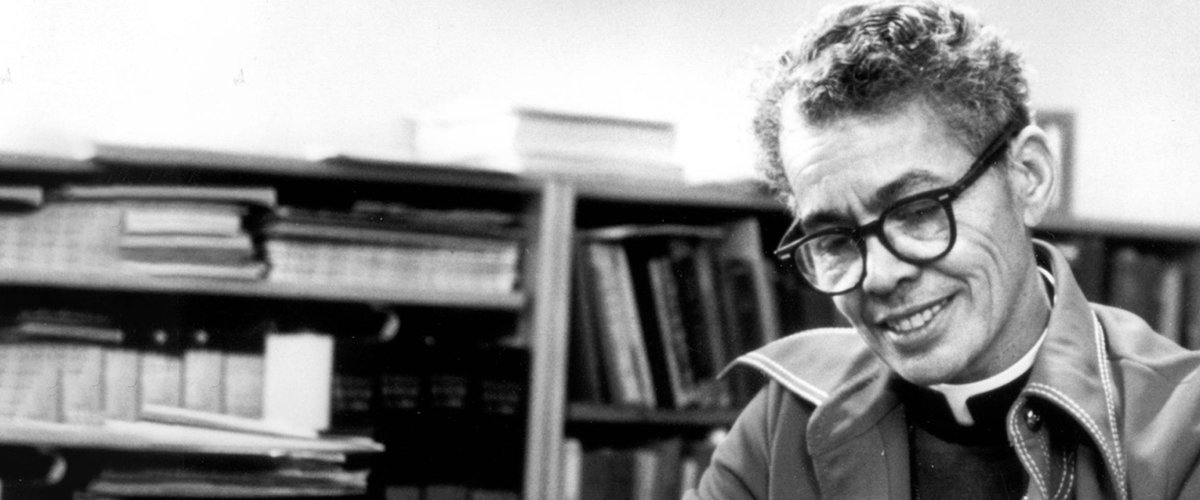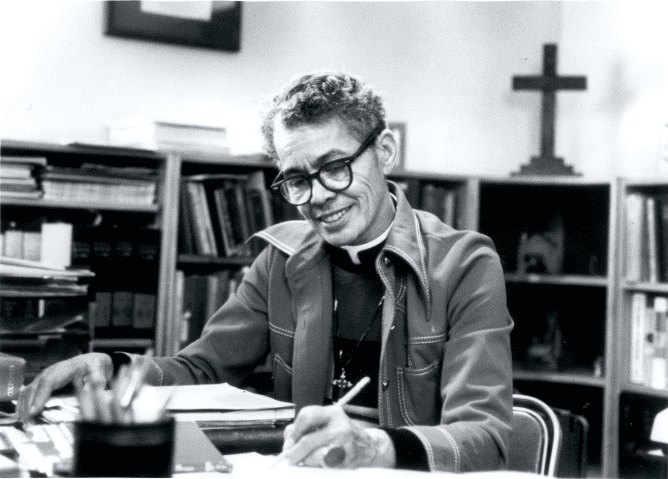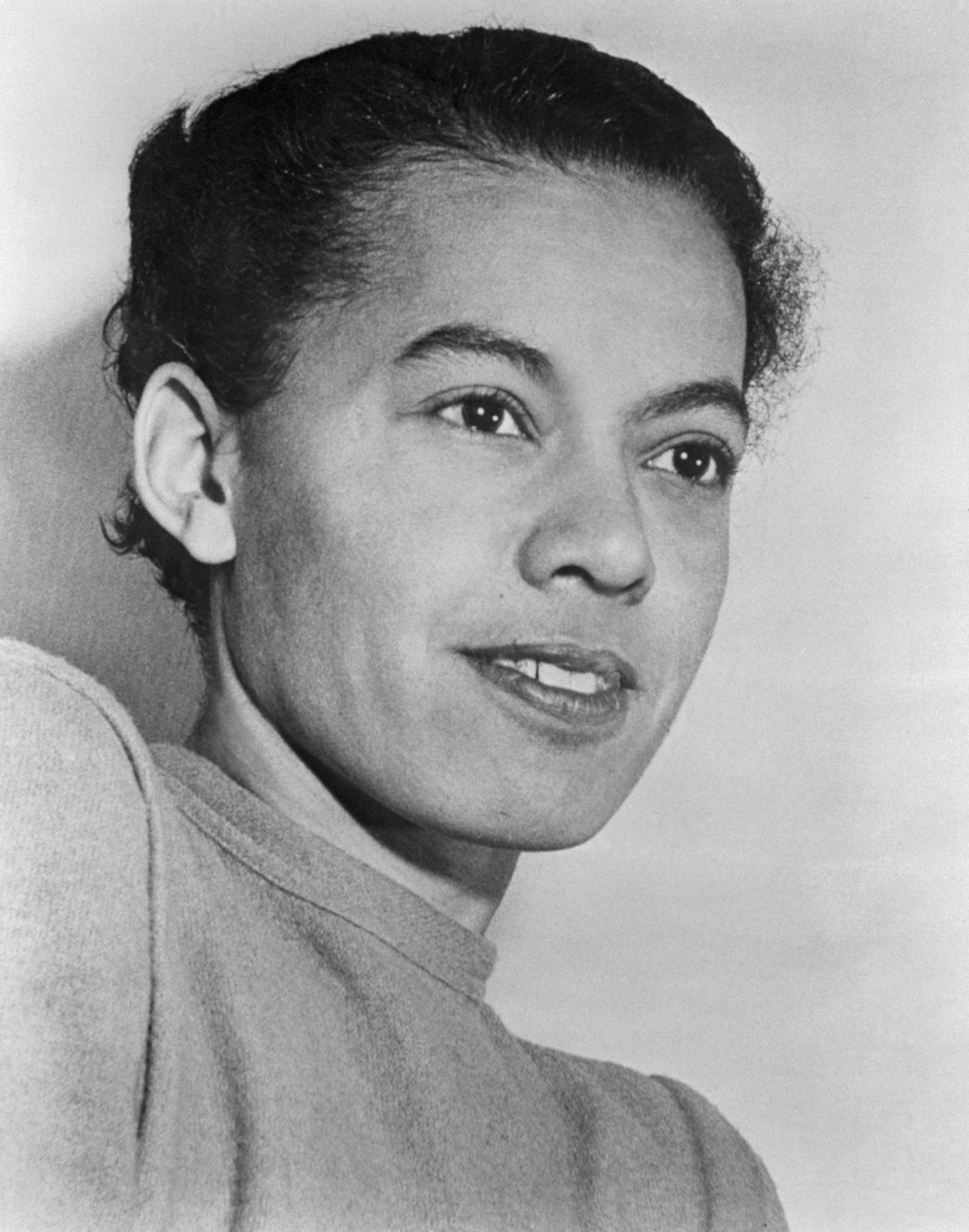
Adamant Pauli Murray's — the Significant Legacy of Black and Queer Activist
Reverend Dr. Pauli Murray is considered a pioneer of LGBTQ rights for arguing that the Equal Protection Clause should apply to gender as well as racial discrimination.
Anna Pauline Murray was born in 1910, at a time when women had no vote, blacks were discriminated against, and homosexuality was a crime. A deeply religious woman, she spent her fighting for equality, and her sexual identity.
Murray was the first African American, man or woman, to receive a doctorate degree from Yale Law School. Her work on gender discrimination was quoted, and she was credited as co-author by Ruth Bader Ginsburg in her landmark 1971 brief in Reed v. Reed.

Rev. Dr. Pauli Murray | Source: Wikimedia Commons/Carolina Digital Library and Archives, UNCPauliMurray, CC BY-SA 3.0
CHILD OF THE NEW CENTURY
Pauli Murray, as she preferred to be called, was raised by her grandparents in North Carolina. Slender and boyish she often wore men's clothes rather than the almost obligatory skirts and dresses.
In the 40s she was arrested for violating segregation laws by sitting in the whites-only section of a Virginia bus, years before Rosa Parks She had already encountered another type of discrimination when she had studied law at Howard, an HBCU.

Pauli Murray, the winner of a 1946 Mademoiselle Merit Award for signal achievement in law | Source: Getty Images
DISCRIMINATION
At Howard, she graduated a the top of her class, but unlike the University's previous top graduates, she was not permitted to do her graduate work at Harvard on the basis that she was a woman.
Murray found herself faced with gender and racial discrimination, and since she was disturbingly androgynous in an era that prized hyper-femininity, she was discriminated against for her sexuality too.
In 1977 Murray became the first black woman -- and surely the first lesbian --to take orders in the Anglican faith.
SEXUALITY
From a very young age, Murray would find herself struggling with her gender identity. Murray married young but ended up divorcing and confessed that she felt uncomfortable in a sexual relationship with a man.
Murray admitted to suffering from gender dysmorphia and sought medical help. Believing herself to be essentially male, Murray asked for hormone therapy but was denied. It would be decades before gender reassignment became acceptable.
PAULI MURRAY IN LOVE
Murray would have several profound relationships with women whom she described as "feminine and heterosexual." In the 50s she met Irene Barlow, and once again ticked all the boxes on forbidden love.
Barlow was white, a woman, and like Murray, a devout Christian. The couple would be together for over 20 years until Barlow's death from cancer in 1973 at the age of 59. Her passing devastated Murray, who turned towards religion for comfort.
ORDAINED
In 1975, the first women were ordained as priests by the Episcopal Church in the United States, and in 1977 Murray became the first black woman -- and surely the first lesbian --to take orders in the Anglican faith.
In her sixties, Murray attended seminary, and after her ordination devoted herself to ministering to the sick, and described her mission as a priest as one of reconciliation. She would be the first woman to preach in North Carolina, in the church she had attended as a child.
SAINTED
In 2012 the Episcopalian Church honored Murray as one of its Holy Women, Holy Men, considering her a priest who had truly followed in Christ's footsteps and had attempted to make a positive change in the world.
Murray, who had been raised by her grandmother, who had been born into slavery, wrote several books about her life and her family history, including her posthumous memoir, "Song in a Weary Throat: An American Pilgrimage."
A brilliant legal mind, often quoted by Thurgood Marshall and Ruth Bader Ginsberg, a fierce activist against racial discrimination during the Civil Rights movement, Pauli Murray's contribution has often been ignored.
Perhaps her struggle with her sexuality at a time when transsexuality was denied, her openly lesbian relationships, made Murray an "uncomfortable" figure. Murray succumbed to cancer in 1985, and her legacy is being rediscovered and celebrated.
